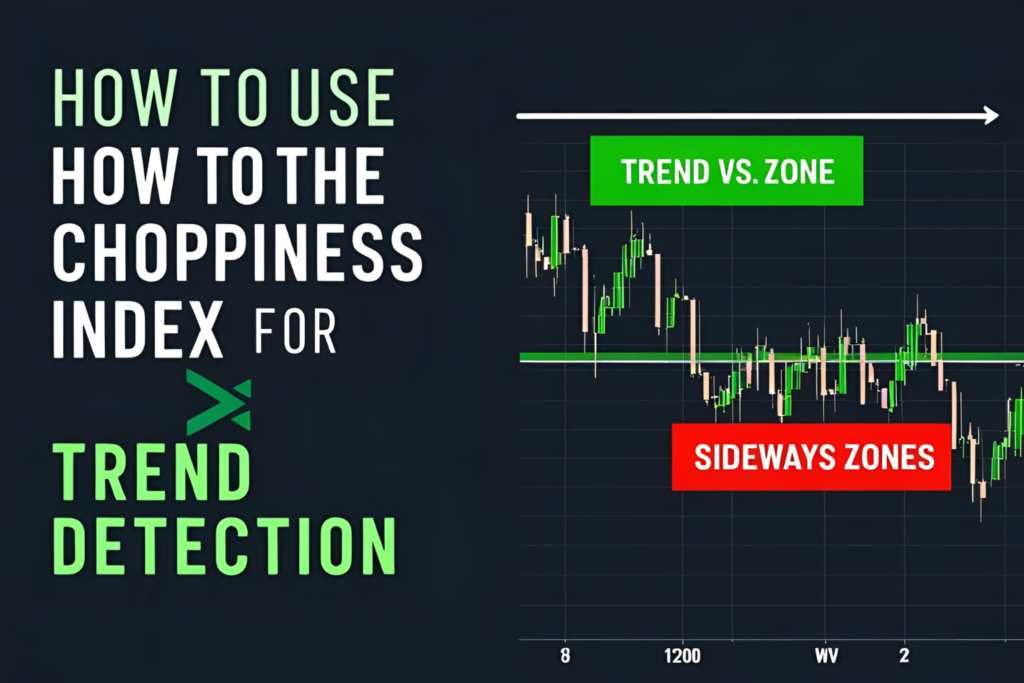Introduction
Identifying whether the market is trending or consolidating is key to choosing the right trading strategy. The Choppiness Index is designed to help traders determine market conditions and avoid trading blindly in choppy environments. In this guide, we’ll explain how to use the Choppiness Index to detect trend strength or absence.
What Does the Choppiness Index Measure?
The Choppiness Index doesn’t indicate price direction. Instead, it tells whether the market is:
- Choppy (range-bound or sideways)
- Trending (moving strongly up or down)
The values range from 0 to 100:
- Above 61.8 → Sideways or choppy market
- Below 38.2 → Strong trend in place
The indicator is often used alongside other tools like ADX or RSI to confirm trading signals.
How to Read Choppiness Index for Trend Detection
- High Choppiness Values (>61.8):
Indicates a consolidating or non-trending phase. Avoid trend-following strategies in this zone. Instead, consider range-bound strategies. - Low Choppiness Values (<38.2):
Signals a strong directional trend. This is when trend-following strategies like breakout trades or moving average crossovers are more effective.
Example Trading Scenarios
- Choppiness High, Price Flat:
The market may be waiting for a breakout. Trend traders should stay on the sidelines. - Choppiness Falling + Price Moving Up/Down:
Suggests a strengthening trend. A possible signal to enter a trade in the direction of the move.
Best Practices
- Always combine the Choppiness Index with price action or indicators like RSI, MACD, or volume.
- Use 14-period setting by default and test other timeframes depending on your market.
- Works best on 1H, 4H, and daily charts.
Choppiness Index vs Traditional Trend Indicators
| Feature | Choppiness Index | Moving Average | ADX |
|---|---|---|---|
| Measures Trend Direction? | ❌ | ✅ | ✅ |
| Measures Trend Strength? | ✅ (indirect) | ❌ | ✅ |
| Shows Choppy Markets? | ✅ | ❌ | ✅ |
FAQs
1. Can the Choppiness Index predict trend direction?
No, it only helps identify whether a trend exists, not its direction.
2. Should I use it alone for trading decisions?
No, it’s best used with other indicators like RSI or MACD for confirmation.
3. What timeframe works best?
Popular choices include 1-hour, 4-hour, and daily charts.
4. Is the Choppiness Index good for trend reversals?
It’s more effective for identifying the beginning or end of choppy phases, not exact reversal points.
5. Does it repaint or lag?
It is a lagging indicator but relatively stable, as it calculates based on historical volatility.
